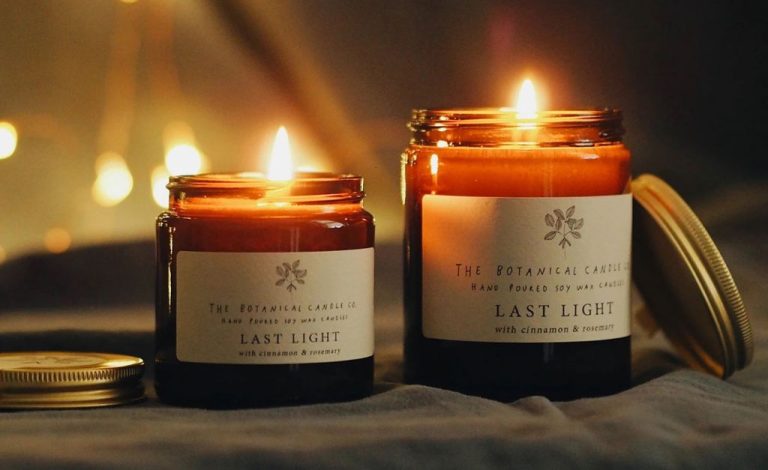Is Scentsy Clean Burning?
What is Scentsy?
Scentsy is a multi-level marketing company that sells scented, wickless candles designed to be heated in electric warmers. The company was founded in 2004 by Orville and Heidi Thompson in Meridian, Idaho. Scentsy offers a range of fragranced wax bars, room sprays, essential oils, diffusers, and related products. Their signature product is the Scentsy Warmer, a small heating device that melts wax bars to release fragrance.
The wax bars, called Scentsy Bars, contain a proprietary wax blend infused with fragrances and oils. When placed on top of a heated Scentsy Warmer, the wax melts and turns to liquid, allowing the fragrance to be released into the air. The wax bars do not contain a wick like traditional candles, so there is no open flame. Scentsy warmers work by heating the wax just enough to melt it and disperse the scent, typically between 130-140 degrees Fahrenheit.
In addition to warmers and fragranced wax bars, Scentsy also offers room sprays, diffusers, essential oils, and related fragrance products. However, the Scentsy Warmer system with wax bars is their core product line.
Scentsy’s Claims of Being Clean Burning
Scentsy claims that their products are “clean burning” when used properly according to their guidelines. Specifically, Scentsy says their wax warmers and scented wax bars do not release toxins, soot, or smoke into the air when used as directed.
They claim that their wax and products do not leave behind black sooty residue on walls or surfaces when used correctly. The wax fully pools out across the warmer surface and does not burn, so no black carbon residue remains.
By “clean burning,” Scentsy’s definition refers to a lack of smoke, soot and other issues you’d typically find with burning a candle. When their wax warmers and wax bars are used properly by following the usage guidelines, Scentsy claims you can reap the benefits of scented wax without any of the downsides of dirty air or lung irritation.
Testing Scentsy’s Clean Burning Claims
Scentsy frequently promotes its products as “clean burning”. However, there appears to be a lack of independent third party air quality testing to verify these claims against industry standards. Studies on different types of wax and fragrance warmers suggest particulate matter, volatile organic compounds, and other toxins can be released into indoor air. Testing performed in realistic home environments over typical Scentsy usage periods does not seem readily available.
Without rigorous, long-term air quality testing by reputable laboratories, Scentsy’s sustainability and safety claims related to being cleanly-burning remain largely unproven. More transparency and scientific evidence from Scentsy is needed for consumers and consultants to make fully informed decisions about using its products, especially in homes with health sensitivities.
Scentsy Wax and Fragrance Oils
When assessing the clean burning claims of Scentsy products, it’s important to analyze the ingredients used in Scentsy wax and fragrance oils. According to Scentsy, their wax is made from a proprietary blend of waxes and contains no toxins, carcinogens, or hazardous ingredients.
However, Scentsy does not disclose the full ingredient list for their wax or fragrance oils, making independent verification of their safety claims difficult. The specific chemical composition of Scentsy’s fragrance oils is also not provided. Without access to Material Safety Data Sheets (MSDS), it’s impossible to conclusively determine if Scentsy wax and oils meet the highest standards for purity.
While Scentsy states their products are thoroughly tested, some consumer reports have raised concerns about soot buildup, allergic reactions, and respiratory issues with Scentsy use. This indicates potential problems either with the wax itself or the fragrances used.
Ultimately more transparency from Scentsy on the specific ingredients and compounds used in their wax and oils would allow for better assessment of their clean burning and safety claims by independent scientists and consumer groups.
Proper Usage is Key
As with any product that generates heat through burning wax or oil, proper usage is critical with Scentsy. While Scentsy wax cubes and warmers can be relatively safe when used properly, issues like excessive soot can develop if not used as intended. Per Scentsy’s guidelines, only one or two wax cubes should be used at a time in the warmer, and cubes should not be left in for more than 6-8 hours.
Using too many cubes or keeping them warm for an extended period of time can lead to incomplete burning and residue buildup. This can result in unwanted black soot on surfaces near the warmer, or even clogged wax melters that do not function properly. Adhering to Scentsy’s guidelines can help minimize safety risks and keep the wax warmer working smoothly for a long period of time.
Soot and Residue Concerns
Scentsy’s claim to be clean burning and produce no soot or residue comes with occasional discrepancies according to user experiences. Some Scentsy customers have complained about a black film of soot or oily residue left on Scentsy warmers and surfaces around them after usage. This contradicts the “no-residue” promise.
Reasons for residue or soot formation could be:
- Using too many wax cubes in the warmer, overloading it
- Letting wax cubes burn for too long
- Placing the warmer too close to walls and surfaces causing soot to spread from heat
- Possible issues with defective or lower quality warmers or wax
Tips to prevent residue or soot:
- Use only the recommended amount of wax cubes per warmer
- Extinguish wax cubes after the proper time according to instructions
- Keep the warmer placement away from walls and surfaces
- Inspect warmers and wax quality before use
- Properly clean the warmer after each use
Potential Health Risks
Some users have expressed concerns regarding potential health risks associated with frequently using Scentsy products indoors for extended periods. While research on this topic is limited, there are a few factors to consider:
One is that Scentsy wax and fragrance oils still produce low levels of emissions and particulates when heated. For those sensitive to fragrances or with respiratory conditions, these emissions could potentially trigger symptoms like headaches, breathing difficulties, and irritation over time with frequent use in an enclosed space.
Another consideration is soot buildup. If Scentsy products are not used as directed and the wax melts faster than intended, more soot residue can accumulate on surfaces inside the home. Some report this residue being difficult to clean. There are concerns that this residue may contain traces of heavy metals, volatile organic compounds, nanoparticles and other components that could be harmful through exposure over long periods.
Proper ventilation is therefore an important consideration with any type of scented product used regularly indoors. Opening windows periodically or running an air purifier can help keep air circulating and fresher. Taking breaks from usage rather than having Scentsy products on 24/7 would also limit indoor emissions.
As with most airborne irritants, those with asthma, allergies, respiratory disease and immune deficiencies may also wish to be more cautious with Scentsy usage over time in poorly ventilated indoor environments.
Comparisons to Candles
When it comes to clean burning, many people wonder how Scentsy compares to traditional wax candles. The key differences between Scentsy and candles are the wax and oils used.
Paraffin wax candles made from petroleum byproducts tend to produce more soot and smoke than soy wax or Scentsy wax. This is because paraffin has a lower melting point and leads to the black smoke residue.
100% soy wax candles burn cleaner than paraffin candles because soy wax has a higher melting point. But soy wax can still produce some black soot, especially if essential oils are used. Testing has found both paraffin and soy candles produce trace amounts of benzene and toluene.
Compared to soy candles, Scentsy may produce less soot and smoke since its wax and oils are formulated for warming rather than burning. Very little residue accumulates on Scentsy warmers or bulbs compared to the black soot that can coat candle holders.
However, currently there are no lab tests directly comparing Scentsy wax, oils, and residue to those produced by soy wax candles under similar controlled conditions. More testing is needed to substantiate any clean burning claims over soy candles.
Environmental Impact
Scentsy states that they are committed to environmental sustainability. They aim to use minimal and recyclable packaging for their products. Scentsy also claims that their wax and products can be recycled through their Take Back program. Customers can return used Scentsy products to be properly recycled.
However, some critics argue that the recycling program does not adequately deal with the scale of waste created by Scentsy consultants and customers. The onus is on individuals to package and ship used products back to Scentsy. There are concerns that many products end up in landfills instead. More transparency from Scentsy on the actual rate of recycling could help clarify their environmental impact.
The Verdict on Scentsy’s Claims
After reviewing Scentsy’s claims of being a clean burning product, as well as third party testing results and comparisons to similar products like candles, the evidence is inconclusive. While Scentsy may produce less soot and contaminants compared to some conventional candles, there are still some concerns around the residue its wax and fragrance oils leave behind with prolonged use. Key takeaways include:
- Independent lab tests confirm lower emissions of certain chemicals like VOCs compared to paraffin candles.
- However, there is potential build up of fragrance oils and other residue over months/years of Scentsy use.
- Proper usage, cleaning and maintenance can minimize risks, but does not completely eliminate them.
- More longitudinal studies would be needed to conclusively state whether or not Scentsy’s are 100% clean burning.
In conclusion, while Scentsy products may produce less soot compared to some candles, there are still open questions around the long-term safety and residue build up from its wax and fragrance oils. Scentsy’s likely fall somewhere in the middle between traditional paraffin candles and essential oil diffusers in terms of clean burning performance and potential health risks.


